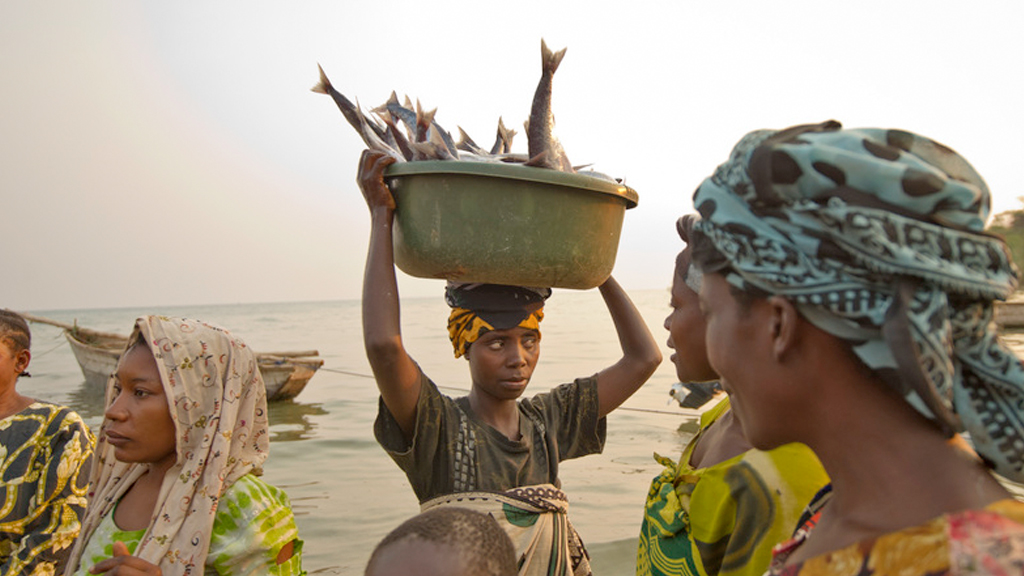Mexico and Central America
Overview
TNC’s work in the Mexican Caribbean is on the frontline of a global strategy to mainstream natural systems as solutions for coastal protection, and to reduce risk for billions of people living in coastal areas around the world. As a major 12 billion-dollar a year tourism destination, with well-developed coastal ecosystems in the pathway of severe storms and hurricanes, the Mexican Caribbean provides an ideal scenario to spearhead nature-based solutions for climate risk protection.
The Mexican Caribbean hosts part of the Mesoamerican Reef, a 600 km long coral reef barrier with thriving biodiversity that sustains 2 million people in Mexico, Belize, Guatemala and Honduras. This exceptional ecosystem is home to over 500 fish species, 70 coral species, migratory mammals and the largest aggregation of whale sharks in the world. Its natural systems are composed of reefs, dunes and mangroves that are currently threatened by human activities.
The Mexican federal government’s emphasis on disaster prevention, contributes to making the Mexican Caribbean one of the most promising coastal areas to test innovative strategies for risk reduction. It is also worth noting that private and federal funding for risk reduction is far larger than funding for conservation. Therefore, risk reduction funding is an efficient strategy for conserving our reefs, dunes and mangroves, supporting the biodiversity they harbor and providing protection and resilience against the effects of climate change for nature and people.
The project’s goal is to mainstream the use of natural systems to reduce climate risk in Mexico’s Caribbean, which is aligned with the following priorities: Protect land and water by restoring and conserving marine and coastal ecosystems that support important biodiversity; and tackle climate change by providing nature-based solutions to strengthen climate resilience for coastal communities.
Overview
Reefs, dunes and mangroves in Mexico’s Caribbean coast that provide coastal protection are under threat. The region has lost 80% of live coral cover, 33% of sand dunes and 12% of mangroves due to human impacts including coastal development, overfishing, water pollution and climate change. 
Socioeconomic
The region’s multi-billion-dollar tourism industry, which fuels the economy and generates livelihoods, is simultaneously one of the main drivers of unsustainable practices that lead to coastal degradation. A main challenge and goal of this project is to change the mindset of the tourism industry to recognize the value of those systems for their own protection.

Nature
To reduce coastal risk, capital and funding are already flowing to build seawalls, levees, dikes and artificial reefs, referred as gray infrastructure, which further contribute to the degradation of natural ecosystems. Therefore, another challenge is to demonstrate that natural systems are more cost-effective than human-made infrastructure.

Overview
The Nature Conservancy’s (TNC) Coastal Risk and Resilience (CRR) strategy aims to mainstream the use of natural systems for coastal protection. In Mexico’s Caribbean, we have partnered with the private sector, governments and communities since 2014 to make the case for conserving nature’s readily available systems – reefs, dunes and mangroves – to mitigate the impacts of climate events on the coast.
TNC has developed the science to demonstrate how these ecosystems protect the coast and is creating the tools, know-how and local capacities to restore and conserve them. In 2018, together with the state government of Quintana Roo, Mexico, we launched the state’s Coastal Zone Management Trust, a financial mechanism that will channel private and public capital towards the conservation and restoration of coastal ecosystems. The Trust has now purchased a first-of-its-kind insurance policy for reefs and beaches to cover restoration activities.
The next phase for CRR in Mexico is to work closely with private capital and public programs to invest in the restoration and conservation of reefs, dunes and mangroves to reduce risk by mobilizing capital towards ecosystem restoration. Timing is ideal to harness the interest generated in financial and conservation circles as a result of the reef insurance purchase, and to accelerate the pace of conservation by building local capacity for ecosystem restoration, driving policy changes and generating stakeholder and corporate engagement.

Strategic Components
1. Demonstrate that natural systems are cost-effective to protect the coast.
2. Develop tools and guidelines
3. Build the capacities to restore and use natural systems for coastal protection.
4. Engage key private stakeholders to adopt appropriate development and restoration practices.
5. Assist federal environmental sector to access risk reduction and emergency response funding.
6. Implement projects to demonstrate how natural systems can be restored to provide coastal protection.
7. Consolidate and expand the post storm-response capacity in Mesoamerican Reef, including governance, local capacity and financial instruments.

Low density development in Sian Ka’an. Photo credit: Fernando Secaira

Elevated pathways. Photo credit: Amigos de Sian Ka’an

Open spaces to allow wind flow. Photo credit: Amigos de Sian Ka’an

Elevated house in Sian Ka’an. Photo credit: Amigos de Sian Ka’an
Partners
• Comisión Nacional de Áreas Naturales Protegidas – CONANP
• Secretaria de Ecologia y Medio Ambiente del Estado de Quintana Roo, Mexico – SEMA
• Universidad Nacional Autónoma de México – UNAM
• Instituto Nacional de Pesca y Acuacultura – INAPESCA
• Centro de Investigación y de Estudios Avanzados del Instituto Politécnico Nacional – CINVESTAV
• Mesoamerican Reef Fund – MARFund
Resources
- Importancia de los Arrecifes y Dunas en la Protección de la Costa
- Importance of Reef and Dune in the Protection of the Coast
- The risk reduction benefits of the Mesoamerican Reef in Mexico
- Lineamientos para el manejo de la erosión de playas
- Guidance document for reef management and restoration to improve coastal protection
- Protocolo de Alerta Temprana y Respuesta Inmediata
- Early Warning and Rapid Response Protocol
- Guide on How to Insure a Natural Asset
Videos
- Video (90 secs): “Importance of natural systems for coastal protection.”
- Video (3.5 min) “Guardians of the Reef: prepared for impact.”.
- Video (100 secs) “Unlocking investment for coral reefs”

